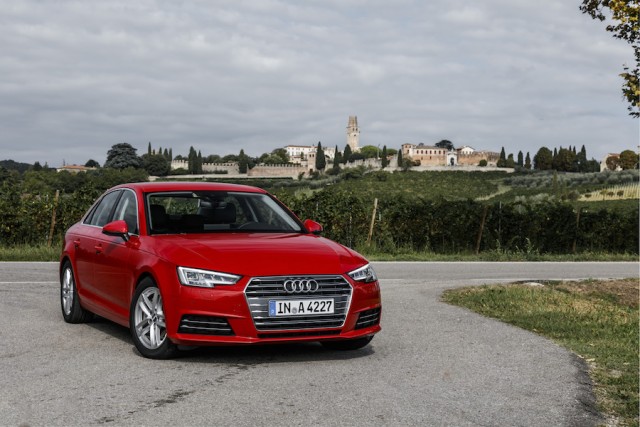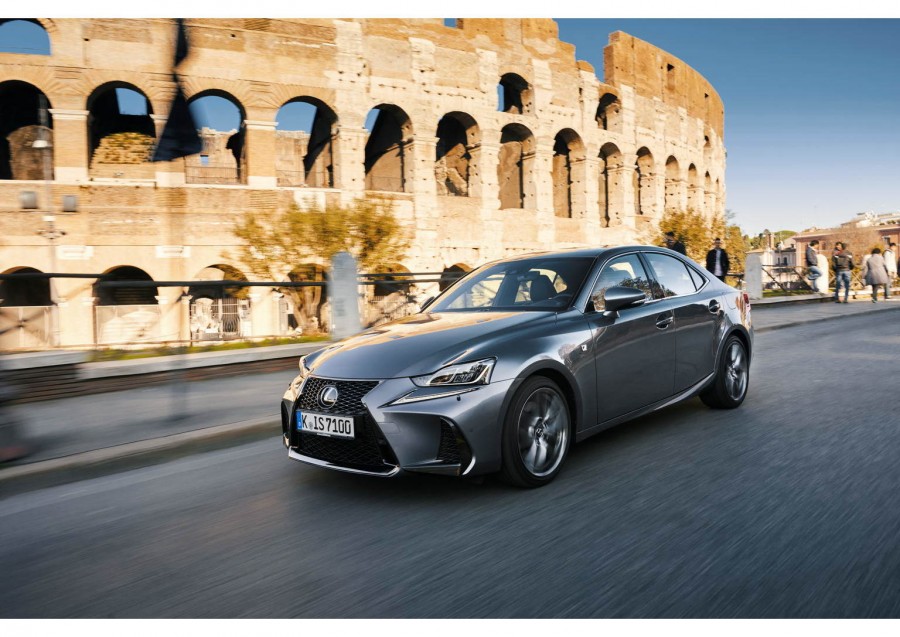What are you driving?
A plug-in hybrid version of the BMW 3 Series. Wearing the '330e' badge (which of course bears no relation to engine capacity), this car is equipped with a 2.0-litre turbocharged four-cylinder petrol engine mated to an electric motor, driving the rear wheels through an eight-speed automatic gearbox. This isn't a brashly different hybrid a la BMW i3 or i8, but rather a neat PHEV solution integrated into the regular 3 Series body.
That's no bad thing, and as we alluded to on our first drive of the 330e, you'd be hard-pressed to spot the external differences from a distance. Small 'eDrive' icons on the C-pillars, the electric charging point on the nearside front wing and the '330e' motif on the boot lid are the only clues, and the badges can even be deleted if you so wish. Our Black Sapphire test car had the full M Sport Plus package and looked suitably menacing, with the 19-inch wheels wrapped in run flat Bridgestone tyres giving it a nicely aggressive stance. Big M Sport brakes nestle behind the rims, too, and are far from a vanity exercise when you take the weight of the car (1,660kg) into consideration.
Inside, only the little eDrive button mounted aft of the gear lever and some extra display modes betray the 330e's hybrid nature, with the rest of the interior being typical of any high-spec 3 Series. The iDrive system is still excellent (I prefer it to most touchscreen jobbies), though the boot space is noticeably compromised due to the big battery pack located under the floor. The rear seats are a squeeze if you want to fit three adults in comfort over a long journey, but from a driver's point of view everything is pretty spot-on. There's enough adjustment to allow any shape or size of human being to find a good driving position and the control surfaces are tactile and sensibly laid-out.
Name its best bits
As the 330e starts at €41,030 (when the SEAI grant and VRT relief are taken into account), its pricing is directly comparable with the likes of the BMW 316d, 318d and petrol 320i variants of the 3 Series. Performance-wise, it absolutely knocks those cars for six, as this is a seriously quick machine. The instantaneous torque proffered by the electric motor combines with the petrol engine's gutsiness to propel you to 100km/h in a shade over six seconds from a standstill. It does strain slightly towards the higher reaches of the rev range, but the smooth eight-speed Steptronic transmission never seems to run out of ratios, and so the surge goes on and on. The phrase 'point and squirt' is pretty apt for the 330e, and it's hard not to elicit a small chuckle at the irony of going this quick with the litany of badges stuck to the car that suggest an environmentally-conscious bent. On battery power alone, it's still plenty swift enough to comfortably dice its way in and out of traffic and on to a limited top speed of 120km/h.
On paper, the official economy figures are utterly astounding, too. Depending on wheel size, 1.9 litres/100km (148.7mpg) is said to be achievable, and the thought of gliding silently to and from work in electricity-only 'Max eDrive' mode is very tempting, so long as you don't exceed the 40km battery range. The tiny emissions figure of 44g/km makes the cheapest non-electric tax bracket seem too expensive for it, and no diesel can get anywhere near those sorts of numbers. The 330e puts forward a very strong case then, but as usual, there is a 'but'.
Anything that bugs you?
On-paper promise is one thing, real-world figures are another. During a week of mixed motorway and urban driving with the odd spirited sprint thrown in, the 330e struggled to do much better in terms of fuel consumption than 7.5 litres/100km (37.6mpg) in our hands. The range achievable on battery power was distinctly shorter than the quoted figure, too, even when driving with as much restraint as my right foot could muster, and in the city the 3 Series is not a small car by any means.
The extra weight penalty from the powertrain is immediately noticeable when you hit the corners, too. While the 3 Series has slightly moved away from being the unashamedly driver-focused machine it once was in favour of a more refined approach, it's still the best steer in its class. Unfortunately for the 330e, its responses are somewhat dulled, and every turn of the steering wheel is a reminder that this is now a heavyweight car. The battery pack has altered the chassis balance to the extent that pronounced understeer is the prevalent style on corner entry if you're driving with 'intent', followed by an uncomfortable shift mid-turn as the front tyres load up and the heavy rear end comes into the equation. It's a disjointed feeling, not helped by the wooden brake pedal (a symptom of the regenerative braking technology in use) that makes it difficult to discern exactly how much force is required to stop the thing, and the quick but lifeless steering.
And why have you given it this rating?
After all is said and done, it's still a BMW 3 Series, so at everyday pace it's refined, quiet (apart from some tyre roar on the bigger rims) and comfortable. Just don't let the M badges fool you into thinking that it's some sort of planet-saving M3-lite, because after two or three corners that notion will be well and truly quashed. It does make a lot of sense if you have a short commute and can get away with predominantly using battery power, but on longer journeys where the petrol engine has to come into play the economy figures still fall far short of what a diesel can achieve. It's an interesting, excellent value and quick alternative to the raft of oil-burners on our roads, and has rivals like the Lexus IS 300h licked for pace, but Irish people are still under a diesel spell that is proving hard to break. A pity, because this a good car and it demonstrates how far the hybrid concept has come, so if BMW et al can keep improving hybrid technology to a point where it can come close to or match diesel for everyday practicality and ease of use, we will finally start to see the end of the 'd' badge on boot lids around the nation.
I want to know more
As we already published a detailed first drive of the BMW 330e, we didn't think it was worth going over old ground, but if you'd like any information that we've missed out then don't hesitate to send us a question via the Ask Us Anything page.
Further reading
BMW 330e first drive


































